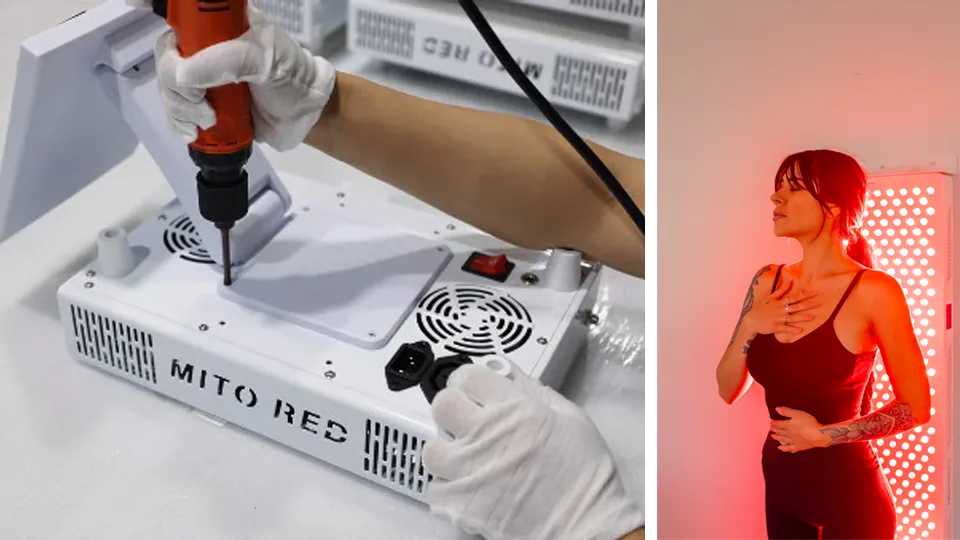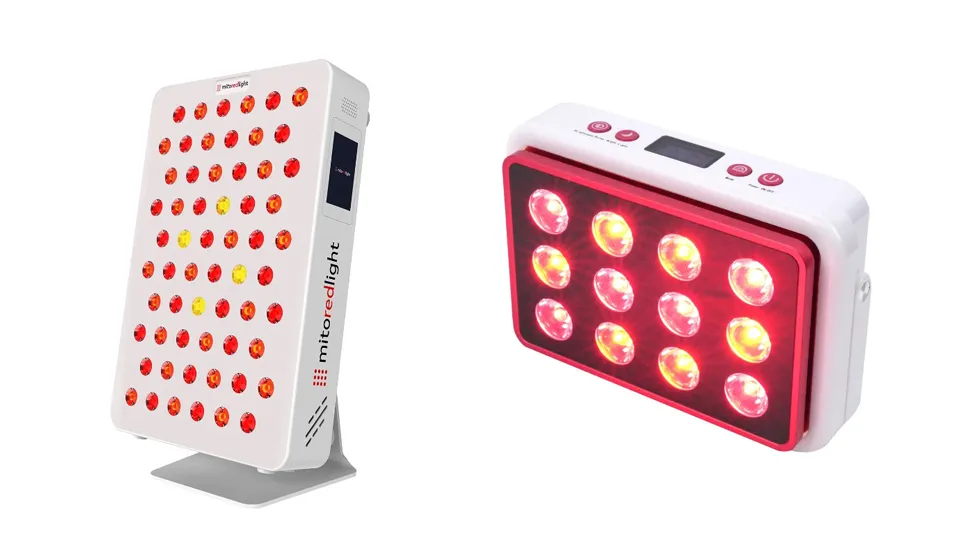In the rapidly growing wellness technology market, where design, user experience, and functionality converge, Scott Chaverri's story stands out. As the founder of Mito Red Light, a US-based company specializing in red light therapy devices, his journey showcases how a personal quest for healing led to the creation of a thriving business. His experience is not just one of innovation but also a testament to the importance of perseverance, design, and intellectual property protection in bringing revolutionary wellness products to market.

From Personal Struggles to Wellness Innovation
Scott Chaverri’s journey began with his personal struggle as a young adult. Plagued by insomnia, anxiety, and skin issues, he searched for answers, only to discover the root of his problems: blue light exposure after sunset. This light bulb moment revealed that artificial lighting was disrupting his sleep. Turning to red light therapy - a treatment gaining recognition for its benefits to sleep, mental health, and overall well-being - Scott began to experience transformative results. With just a few minutes of red light therapy daily, he enjoyed better sleep, reduced anxiety, and a significant improvement in his overall mood. However, Scott faced a challenge: red light devices were prohibitively expensive, making them inaccessible to the broader public. Determined to make a difference, he set out to create affordable, functional, and beautifully designed red light therapy devices for everyone.
In 2019, bootstrapping the business while maintaining a corporate job, Scott launched Mito Red Light. The company’s mission: to empower people to live healthier lives by combating the harmful effects of “junk light” - excessive exposure to artificial blue light that disrupts the body's natural rhythms. Mito Red Light, named after mitochondria, the energy powerhouses of the body’s cells, aimed to offer accessible, affordable red light and near-infrared therapy devices.
Five years later, Mito Red Light has grown into a company with 11 employees, 75,000 customers, and $15 million in annual revenue. The company’s success story stems from its dedication to creating not only effective products but also aesthetically pleasing designs that fit seamlessly into customers’ homes.

Red Light Therapy: Merging Science and Function
The science behind Mito Red Light’s mission is rooted in the concept of photobiomodulation—using light to stimulate cellular function. Scott’s rationale is clear: humans evolved to spend much of their time outdoors, exposed to natural sunlight and its beneficial wavelengths, including infrared. Today, however, the vast majority of people spend most of their time indoors. According to the Environmental Protection Agency, the average American spends about 93% of their life indoors, leading to a deficiency in natural sunlight. Mito Red Light’s devices are designed to help users supplement their exposure to these beneficial wavelengths, offering a range of potential health benefits.
In the light spectrum, red light, which ranges from about 620 to 750 nanometers, penetrates the skin and tissues to stimulate cellular processes and promote healing. This wavelength is absorbed by mitochondria, boosting cellular function and regeneration. While research on red light therapy is still developing, it has garnered increasing interest from health professionals for its potential to address various physical and mental conditions. Mito Red Light’s customers have reported benefits such as improved sleep, skin rejuvenation, pain relief, and even enhanced hair growth from regular use of their red light therapy devices.

“Red light therapy offers a way to address modern issues caused by our indoor lifestyle while promoting cellular health and overall well-being.”
Scott Chaverri
Function Meets Design: The Importance of Design in Wellness Technology
While Mito Red Light’s success is grounded in science, Scott quickly learned that design plays an equally vital role. Initially, he approached product development from a purely functional standpoint. However, after releasing a black version of one of the company’s LED panels, he discovered the importance of aesthetics when customers overwhelmingly preferred the white version, leading to the discontinuation of the black model.
His marketing team is now working closely with designers to ensure that each product meets high standards of both performance and design. Moving forward, prototypes will also be tested among their clients for design and visual appeal, not only for functionality. This approach will involve gathering feedback to refine the products, ensuring that they are not only effective but also align with customers' preferences and home environments.
Mito Red Light’s best-selling product, the Mito Pro 300X, exemplifies this balance of form and function. Featuring a clean aesthetic, a user-friendly touch-screen interface, and six wavelengths of light, it demonstrates how thoughtful design enhances the user experience.
“Our products are often displayed in our customers' homes, so making them as beautiful as they are functional is essential.”
Scott Chaverri

Mito Red Light’s commitment to quality goes beyond aesthetics. Each product is designed to be durable and resistant to wear, with no planned obsolescence - ensuring that customers can use their devices for years without needing replacements. LEDs, known for being long-lasting, energy-efficient, and cost-effective, are central to the company’s design ethos. “Continuous improvement drives our innovation,” explains Scott. “We aim to offer long-term value to our customers, not just with performance but also with reliability and design.”
Protecting Innovation Through Design Protection
As Mito Red Light expanded, Scott recognized the importance of protecting the company's intellectual property portfolio, which includes trademarks, patents, and designs. Among these, design protection became a particular focus. Safeguarding their unique designs from imitation was seen as crucial for maintaining a competitive edge and preserving their value. By prioritizing design protection, Mito Red Light aimed to ensure its creations stand out in a crowded market and that its investments in creativity and research are shielded from competitive threats.
To effectively manage design protection, Scott consulted his attorney, Steven Jay Miller, the founder of IPath, who recommended The Hague System for the International Registration of Industrial Designs. Administered by the World Intellectual Property Organization, the Hague System offers a streamlined process for securing design rights in over 90 countries. It provides a cost-effective way to protect creations globally, avoiding the financial burden of defending designs in multiple jurisdictions while ensuring they are safeguarded against exploitation.
Today, Mito Red Light holds four active Hague registrations covering eight designs, underscoring their commitment to comprehensive design protection. This approach fosters innovation by providing a secure environment for the company to invest time and resources into developing new ideas without the fear of imitation. It also ensures they can reap the rewards of their innovations, encouraging risk-taking and creativity. Such protection not only benefits Mito Red Light directly but also enhances their competitive edge, driving the development of unique and improved solutions. Ultimately, this contributes to better products for consumers and reinforces their position as a leader in design innovation.
“I can’t overemphasize the importance of internationally registering their product designs to my clients. Obtaining an International Design Registration allows them to file for protection globally in jurisdictions where their products will be manufactured or marketed by filing a single application. A recorded design registration places infringers on notice. Moreover, WIPO’s standardized registration procedures save tremendous amounts of attorney time and clients’ money.”
Steven Jay Miller, Attorney

About the Hague System
WIPO’s Hague System provides a unique international mechanism for securing and managing design rights simultaneously in multiple countries or regions through one application, in one language with one set of fees.
Find out more
- Hague System Digital Information Kit
- How the Hague System works
- Filing international applications
- Managing international registrations
Want to share your story?
If you are interested in sharing your own Designs in Action story, illustrating how you’ve leveraged the Hague System to secure international design protection, we would love to hear from you! Contact Hague



